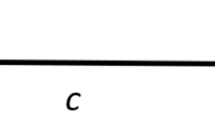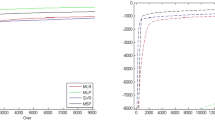Abstract
Many studies have investigated the relationships between object-oriented (OO) metrics and change-proneness and conclude that OO metrics are able to predict the extent of change of a class across the versions of a system. However, there is a need to re-examine this subject for two reasons. First, most studies only analyze a small number of OO metrics and, therefore, it is not clear whether this conclusion is applicable to most, if not all, OO metrics. Second, most studies only uses relatively few systems to investigate the relationships between OO metrics and change-proneness and, therefore, it is not clear whether this conclusion can be generalized to other systems. In this paper, based on 102 Java systems, we employ statistical meta-analysis techniques to investigate the ability of 62 OO metrics to predict change-proneness. In our context, a class which is changed in the next version of a system is called change-prone and not change-prone otherwise. The investigated OO metrics cover four metric dimensions, including 7 size metrics, 18 cohesion metrics, 20 coupling metrics, and 17 inheritance metrics. We use AUC (the area under a relative operating characteristic, ROC) to evaluate the predictive effectiveness of OO metrics. For each OO metric, we first compute AUCs and the corresponding variances for individual systems. Then, we employ a random-effect model to compute the average AUC over all systems. Finally, we perform a sensitivity analysis to investigate whether the AUC result from the random-effect model is robust to the data selection bias in this study. Our results from random-effect models reveal that: (1) size metrics exhibit moderate or almost moderate ability in discriminating between change-prone and not change-prone classes; (2) coupling and cohesion metrics generally have a lower predictive ability compared to size metrics; and (3) inheritance metrics have a poor ability to discriminate between change-prone and not change-prone classes. Our results from sensitivity analyses show that these conclusions reached are not substantially influenced by the data selection bias.




Similar content being viewed by others
Notes
The raw data are available at http://thedata.org.
Assuming a reasonably-sized data set, Hopkins calls a correlation value of less than 0.1 trivial, 0.1–0.3 minor, 0.3–0.5 moderate, 0.5–0.7 large, 0.7–0.9 very large, and 0.9–1 almost perfect (Hopkins 2003).
References
acjf_delta.pl. http://www.scitools.com/plugins/perl_scripts.php
Aman H, Yamasaki K, Yamada H, Noda MT (2002) A proposal of class cohesion metrics using sizes of cohesive parts. Knowledge-based Software Engineering. In: T. Welzer et al. (eds.) IOS Press, 102–107
Arisholm E, Briand LC, Føyen A (2004) Dynamic coupling measurement for object-oriented software. IEEE Trans Softw Eng 30(8):491–506
Badri L, Badri M (2004) A proposal of a new class cohesion criterion: an empirical study. J Object Tech 3(4):145–159
Bansiya J, Etzkorn L, Davis C, Li W (1999) A class cohesion metric for object-oriented designs. J Object-Oriented Program 11(8):47–52
Benlarbi S, Melo WL (1999) Polymorphism measures for early risk prediction. In: Proceedings of the 21st International Conference on Software Engineering, Los Angeles, California, United States, 334–344
Bieman JM, Kang BK (1995) Cohesion and reuse in an object-oriented system. ACM SIGSOFT Software Eng Notes 20(Special Issue):259–262
Bieman JM, Jain D, Yang HJ (2001) OO design patterns, design structure, and program changes: an industrial case study. In: Proceedings of the 17th International Conference on Software Maintenance, 580–589
Bieman JM, Straw G, Wang H, Munger PW, Alexander RT (2003a) Design patterns and change proneness: an examination of five evolving systems. In: Proceedings of the 9th Software Metrics Symposium, 40–49
Bieman JM, Andrews AA, Yang HJ (2003b) Understanding change-proneness in OO software through visualization. In: Proceedings of the 11th Workshop on Program Comprehension, 44–53
Borenstein M, Hedges LV, Higgins JPT, Rothstein HR (2009) Introduction to Meta-analysis. John Wiley & Sons, Ltd
Briand LC, Wüst J (2001) Modeling development effort in object-oriented systems using design properties. IEEE Trans Softw Eng 27(11):963–986
Briand LC, Morasca S, Basili VR (1996) Property-based software engineering measurement. IEEE Trans Softw Eng 22(1):68–86
Briand LC, Devanbu PT, Melo WL (1997) An investigation into coupling measures for C++. In: Proceedings of ICSE, 412–421
Briand LC, Daly JW, Wüst J (1998) A unified framework for cohesion measurement in object-oriented systems. Empir Softw Eng 3(1):65–117
Briand LC, Daly JW, Wüst J (1999) A unified framework for coupling measurement in object-oriented systems. IEEE Trans Softw Eng 25(1):91–121
Briand LC, Wüst J, Daly JW, Porter DV (2000) Exploring the relationships between design measures and software quality in object-oriented systems. J Syst Softw 51(3):245–273
Chidamber SR, Kemerer CF (1991) Towards a metrics suite for object-oriented design. In: the 6th Annual Conference of Object-oriented Programming, Systems, Languages, and Applications, Arizona, 197–211
Chidamber SR, Kemerer CF (1994) A metrics suite for object-oriented design. IEEE Trans Softw Eng 20(6):476–493
Counsell S, Swift S, Crampton J (2006) The interpretation and utility of three cohesion metrics for object-oriented design. ACM Trans Softw Eng Methodol 15(2):123–149
Di Penta M, Cerulo L, Gueheneuc YG, Antoniol G (2008) An empirical study of the relationships between design pattern roles and class change-proneness. In Proceedings of the 24th International Conference on Software Maintenance, 217–226
Dickinson W, Leon D, Podgurski A (2001) Finding failures by cluster analysis of execution profiles. In: Proceedings of the 23rd International Conference on Software Engineering, 339–348
Duval S, Tweedie R (2000) Trim and fill: a simple funnel-plot-based method of testing and adjusting for publication bias in meta-analysis. Biometrics 56(2):455–463
El Emam K, Benlarbi S, Goel N, Rai SN (2001) The confounding effect of class size on the validity of object-oriented metrics. IEEE Trans Softw Eng 27(7):630–650
Hanley JA, McNeil BJ (1982) The meaning and use of the area under a receiver operating characteristic (ROC) curve. Radiology 143(1):29–36
Hannay JE, Dybå T, Arisholm E, Sjøberg DIK (2009) The effectiveness of pair-programming: a meta-analysis. Inf Softw Technol 51(7):1110–1122
Hayes W (1999) Research synthesis in software engineering: A case for meta-analysis. In: Proceedings of the 6th IEEE International Software Metrics Symposium, 143–151
Henderson-Sellers B (1996) Software metrics. Prentice-Hall, Hemel Hempstaed
Higgins J, Thompson S, Deeks J, Altman D (2003) Measuring inconsistency in meta-analyses. Br Med J 327:557–560
Hitz M, Montazeri B (1995) Measuring coupling and cohesion in object-oriented systems. In: Proceedings of the International Symposium on Applied Corporate Computing, Monterrey, Mexico
Hopkins WG (2003) A new view of statistics. SportScience. Dunedin, New Zealand
Julious SA (2004) Using confidence intervals around individual means to assess statistical significance between two means. Pharm Stat 3(3):217–222
Kim E, Kusumoto S, Kikuno T (1996) Heuristics for computing attribute values of C++ program complexity metrics. In: Proceedings of the 20th Conference on Computer Software and Applications, 104–109
Koru AG, Liu H (2007) Identifying and characterizing change-prone classes in two large-scale open-source products. J Syst Softw 80(1):63–73
Koru AG, Tian J (2005) Comparing high-change modules and modules with the highest measurement values in two large-scale open-source products. IEEE Trans Softw Eng 31(8):625–642
Lake A, Cook C (1994) Use of factor analysis to develop OOP software complexity metrics. In: Proceedings of the 6th Annual Oregon Workshop on Software Metrics. Silver Falls, Oregon
Lee Y, Liang B, Wu S, Wang F (1995) Measuring the coupling and cohesion of an object-oriented program based on information flow. In: Proceedings of the International Conference on Software Quality. Maribor, Slovenia
Li W, Henry SM (1993) Object-oriented metrics that predict maintainability. J Syst Softw 23(2):111–122
Lindvall M (1998) Are large C++ classes change-prone? An empirical investigation. Software Pract Ex 28(15):1551–1558
Lindvall M (1999) Measurement of change: stable and change-prone constructs in a commercial C++ system. In: Proceedings of the 6th Software Metrics Symposium, 40–49
Lorenz M, Kidd J (1994) Object-oriented software metrics. Prentice Hall Object-Oriented Series, Englewood Cliffs
Miller J (2000) Applying meta-analytical procedures to software engineering experiments. J Syst Softw 54(1):29–39
Myers EW (1986) An O(ND) difference algorithm and its variations. Algorithmic 1(2):251–266
Payton ME, Greenstone MH, Schenker N (2003) Overlapping confidence intervals or standard error intervals: what do they mean in terms of statistical significance? J Insect Sci 34(3):1–6
Pickard L, Kitchenham B, Jones P (1998) Combining empirical results in software engineering. Inf Softw Technol 40(14):811–821
Scientific Toolworks, Inc., Understand for Java: user guide and reference manual. 2005, http://www.scitools.com
Succi G, Pedrycz W, Djokic S, Zuliani P, Russo B (2005) An empirical exploration of the distributions of the Chidamber and Kemerer Object-oriented metrics suite. Empir Softw Eng 10(1):81–104
Swets JA (1988) Measuring the accuracy of diagnostic systems. Science 240(4857):1285–1293
Tegarden D, Sheetz S, Monarchi D (1992) A software complexity model of object-oriented systems. Decis Support Syst 13(34):241–262
Witten IH, Frank E (2000) Data mining: practical machine learning tools and techniques with Java implementation. Second Edition, Morgan Kaufmann Publishers
Zhou Y, Xu B, Leung H (2009) Examining the potentially confounding effect of class size on the associations between object-oriented metrics and change-proneness. IEEE Trans Softw Eng 35(5):607–623
Zhou Y, Xu B, Leung H (2010) On the ability of complexity metrics to predict fault-prone classes in object-oriented systems. J Syst Softw 83(4):660–674
Acknowledgements
The authors would like to thank the anonymous reviewers for their very insightful comments and helpful suggestions in greatly improving the quality of this paper. This research is partly supported by the National Natural Science Foundation of China (61073029, 60803008, 90818027, 91018005, and 61021062), the Hong Kong General Research Fund (PolyU5225/08E), the Program for New Century Excellent Talents in University (NCET-08-0274), and the Fundamental Research Funds for the Central Universities (1093020202).
Author information
Authors and Affiliations
Corresponding authors
Additional information
Editor: Sandro Morasca
Appendices
Appendix A. Object-Oriented Metrics Used in This Study
Tables 12, 13, 14, and 15 describe the cohesion, coupling, inheritance, and size metrics used in this study. In each table, column “Name” gives the acronym of each metric, column “Definition” provides an informal definition of the metric, and column “Source” indicates the reference where the metric was originally proposed. Note that inheritance metrics are indeed a form of coupling metrics. In practice, however, many researchers distinguish inheritance metrics from coupling metrics. Our study follows a metric classification framework similar to that in (Briand et al. 2000).
Appendix B. The Plot of Pearson Correlation Coefficients and AUC Distributions
Figures 5 and 6 respectively show, for each metric, the distributions of Pearson correlation coefficients and AUC values on all the investigated systems.
Rights and permissions
About this article
Cite this article
Lu, H., Zhou, Y., Xu, B. et al. The ability of object-oriented metrics to predict change-proneness: a meta-analysis. Empir Software Eng 17, 200–242 (2012). https://doi.org/10.1007/s10664-011-9170-z
Published:
Issue Date:
DOI: https://doi.org/10.1007/s10664-011-9170-z






